Abstract
Pulmonary artery catheterisation was carried out in 25 scoliotics aged 13 to 67 years (mean 30.7). Each then performed a progressive exercise test breathing air, and 11 performed a similar test breathing pure oxygen. The mean pulmonary artery pressure (PAP) increased linearly with oxygen uptake (VO2) and with the work rate. The pressure responses have been described in terms of ther intercept and rate of rise of pressure (sPAP/VO2 and sPAP/work rate). sPAP/VO2 was unrelated to the anatomical features of the scoliosis, or to PaO2. It was inversely related to vital capacity, functional residual capacity, and total lung capacity. Inspiration of pure oxygen lowered the resting pressure by a mean of 3.2 mmHg but only decreased sPAP/work rate by 9%. The maximum pressure reached during exercise was diminished by a mean of 5.2 mmHg when pure oxygen was breathed. The mean pressures were shown to fall exponentially after exercise. The time constants were proportional to sPAP/VO2 and to the final pressure reached during exercise. Inspiration of pure oxygen did not effect the time constants but decreased the post-exercise pressure load by lowering the final pressure during exercise.
Full text
PDF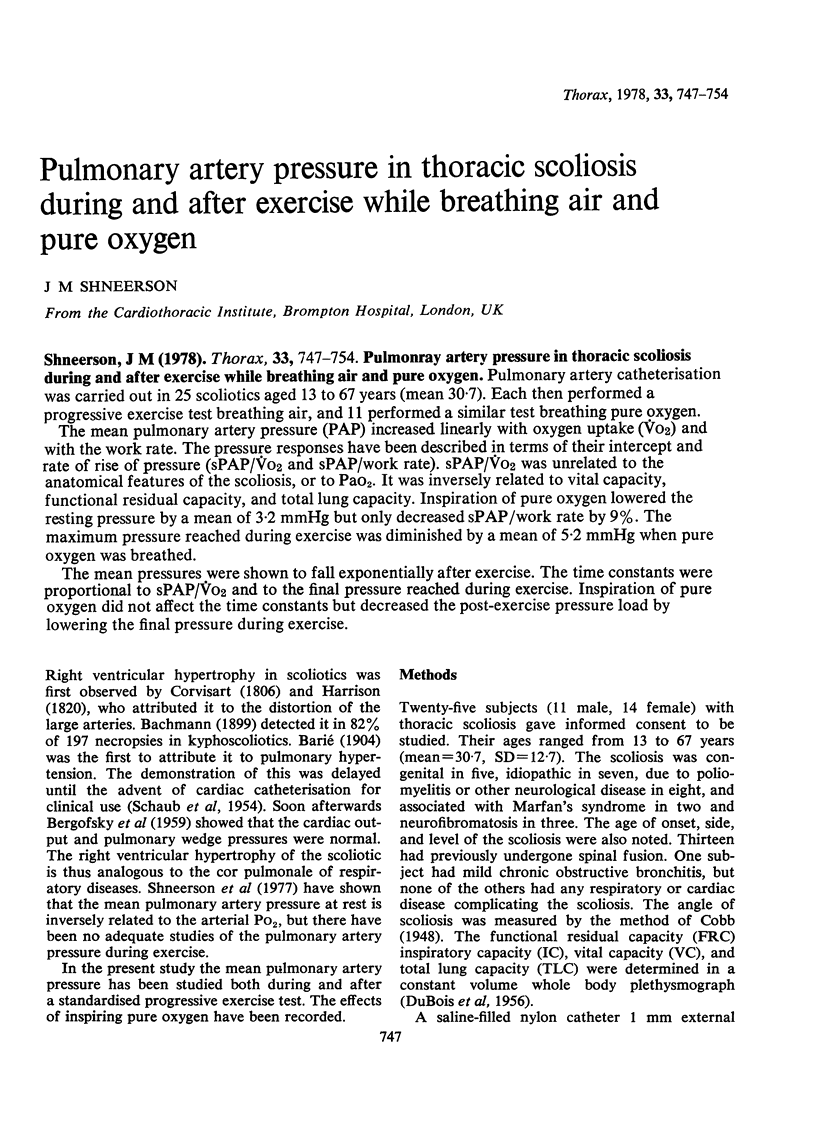
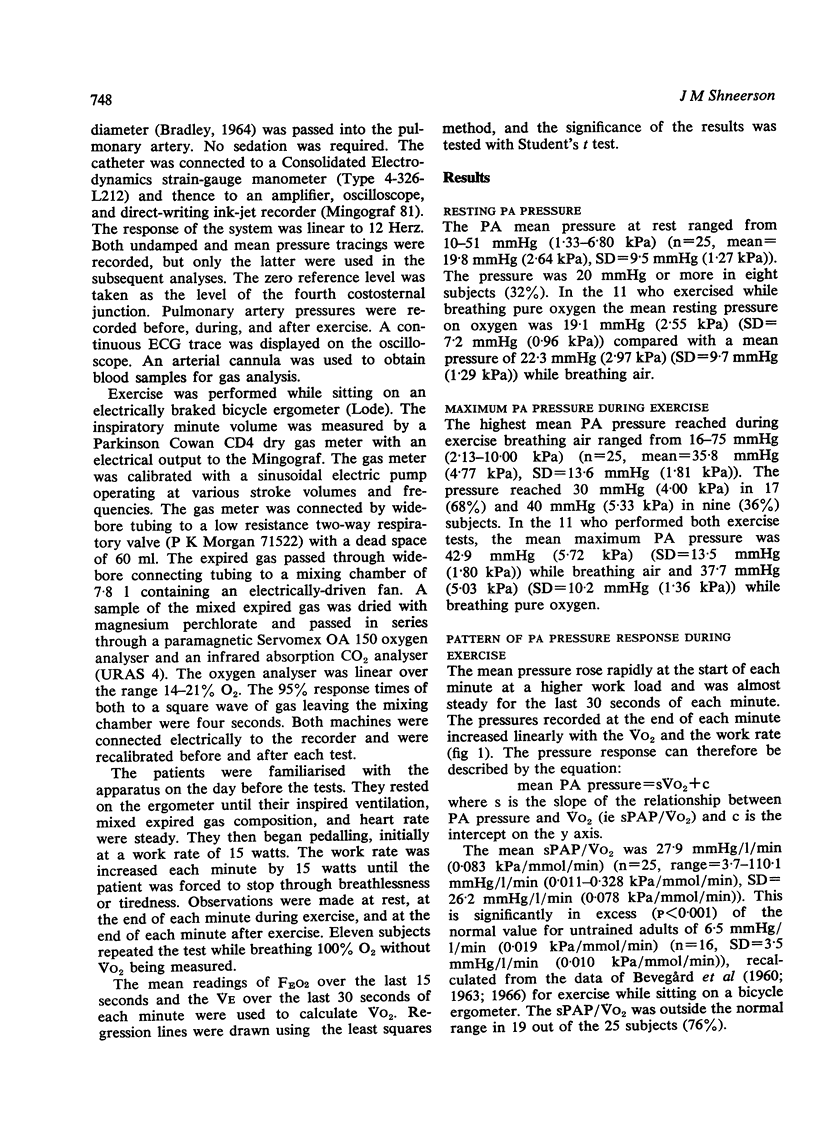
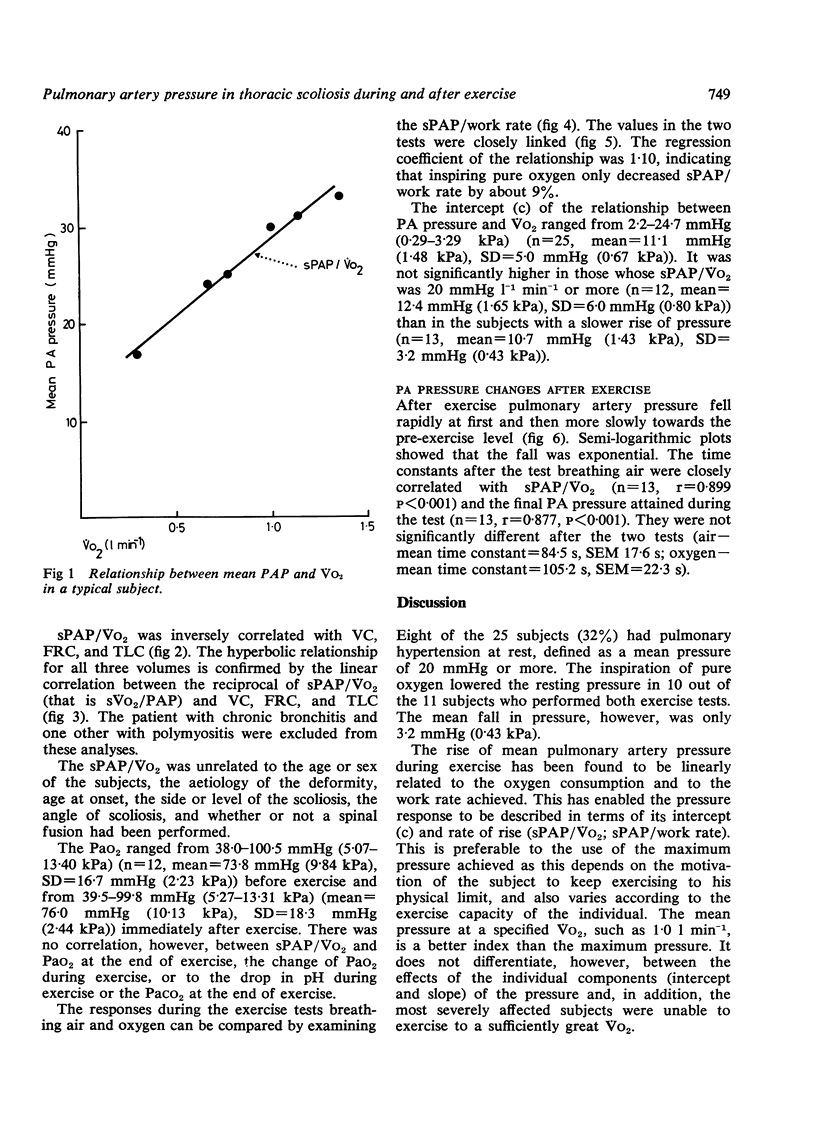
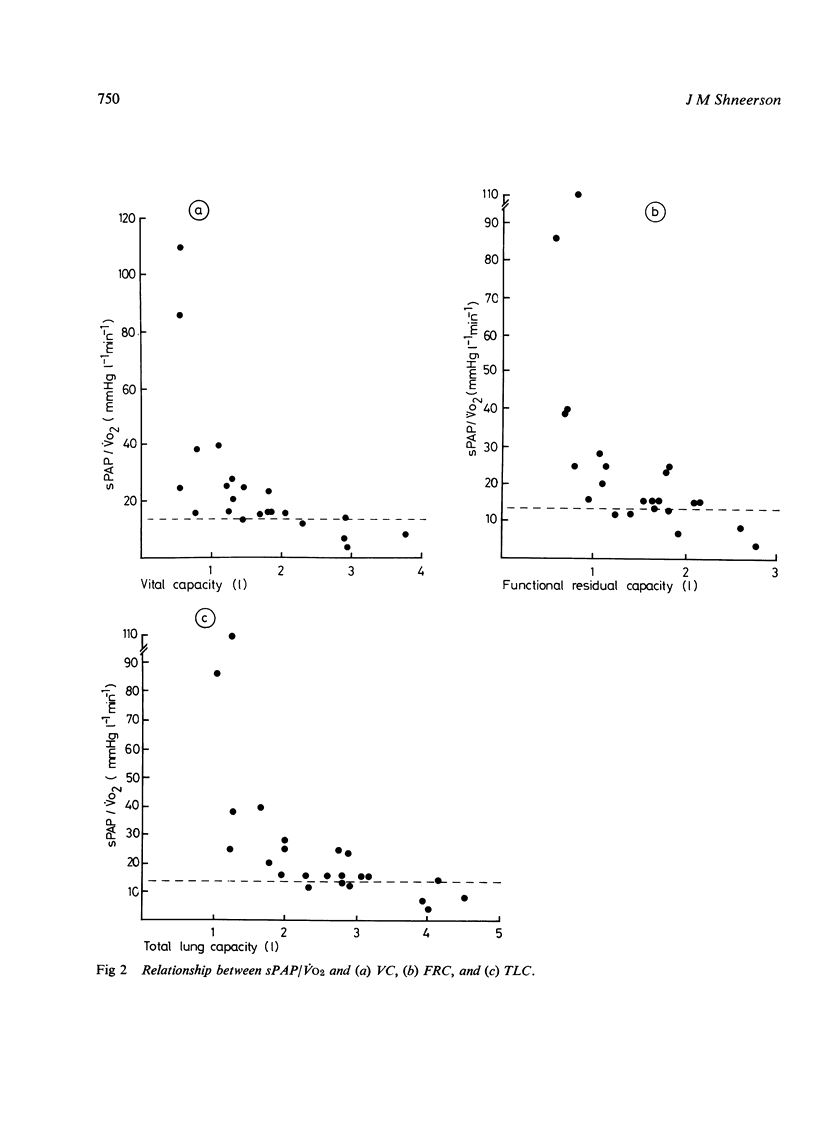
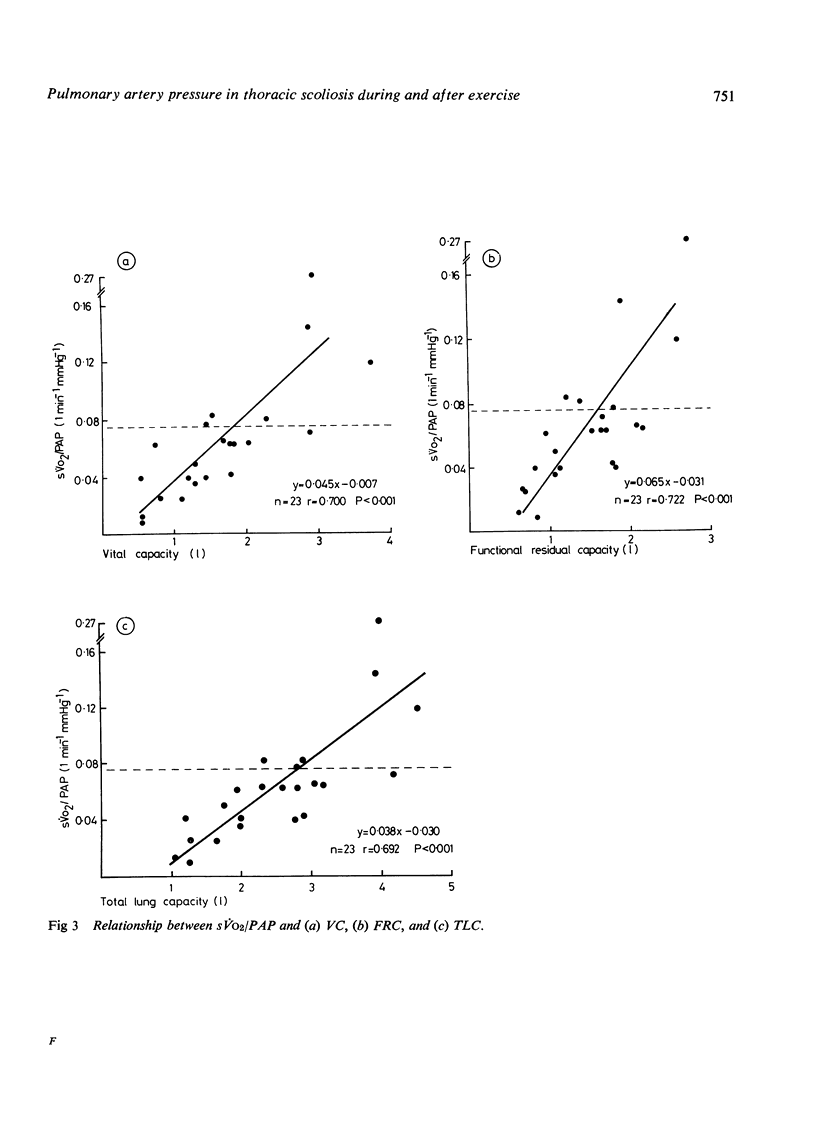
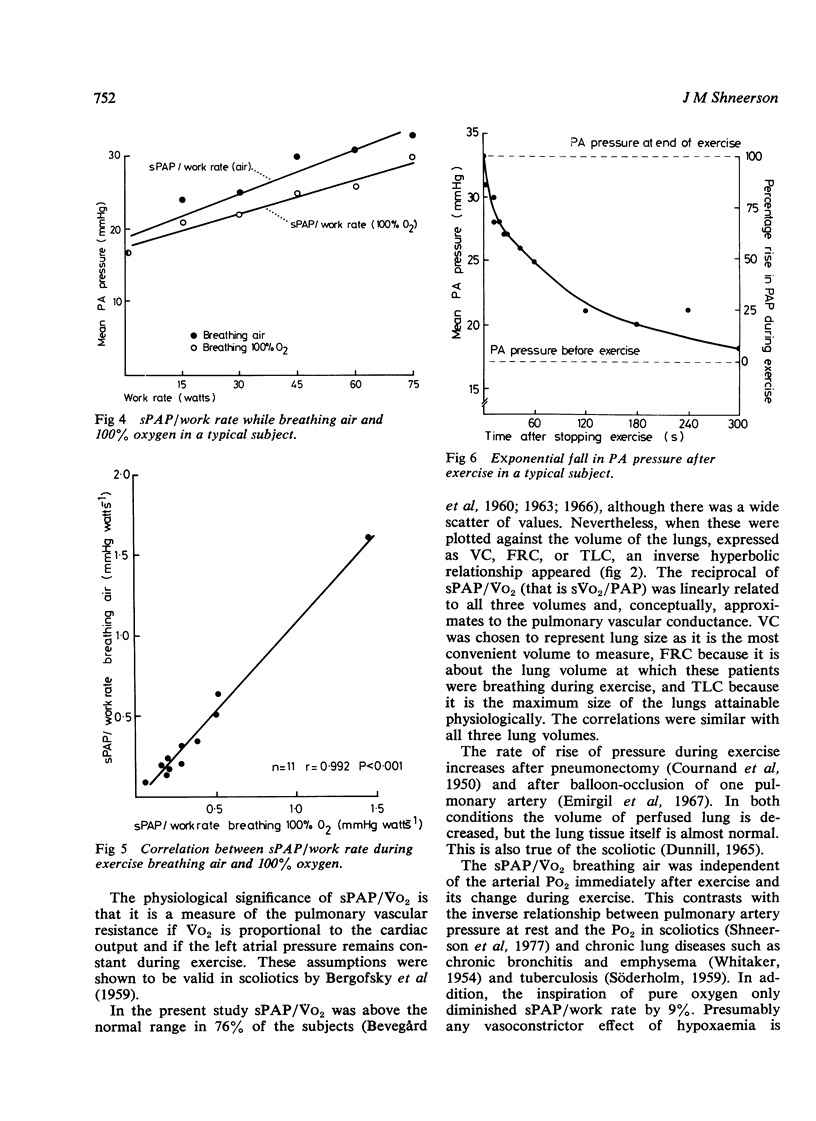
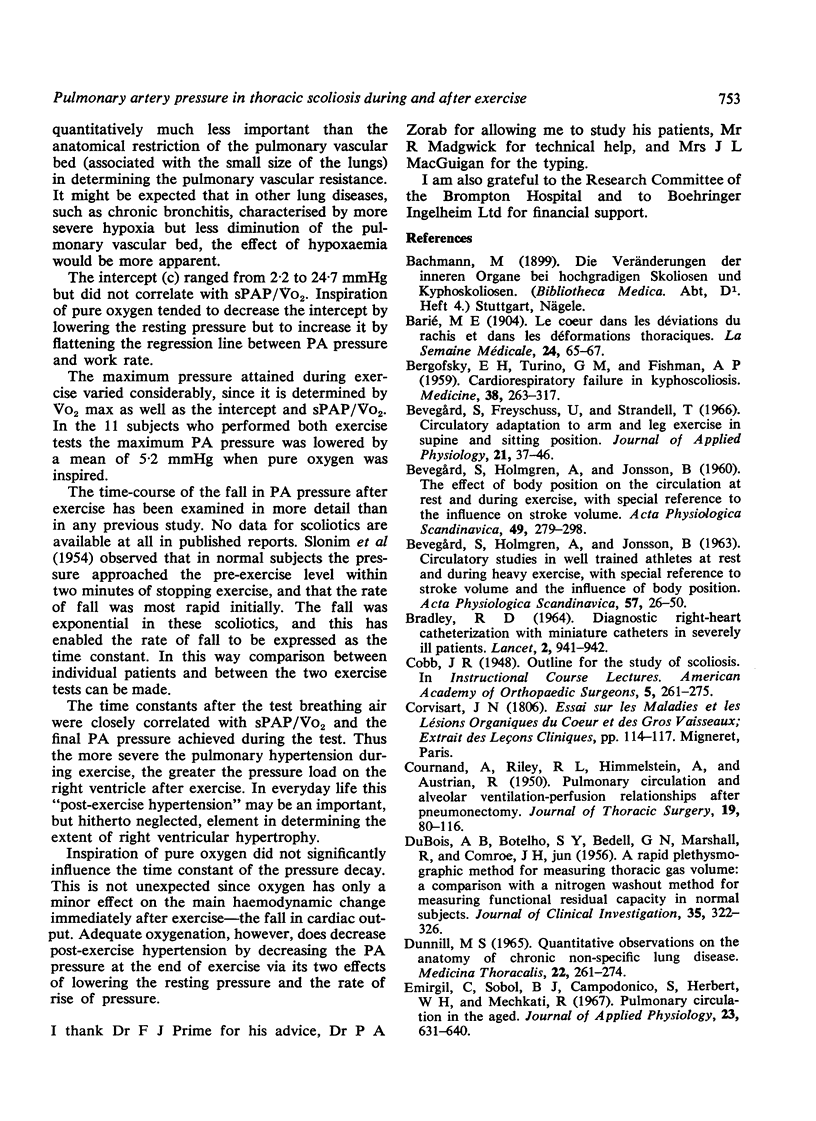
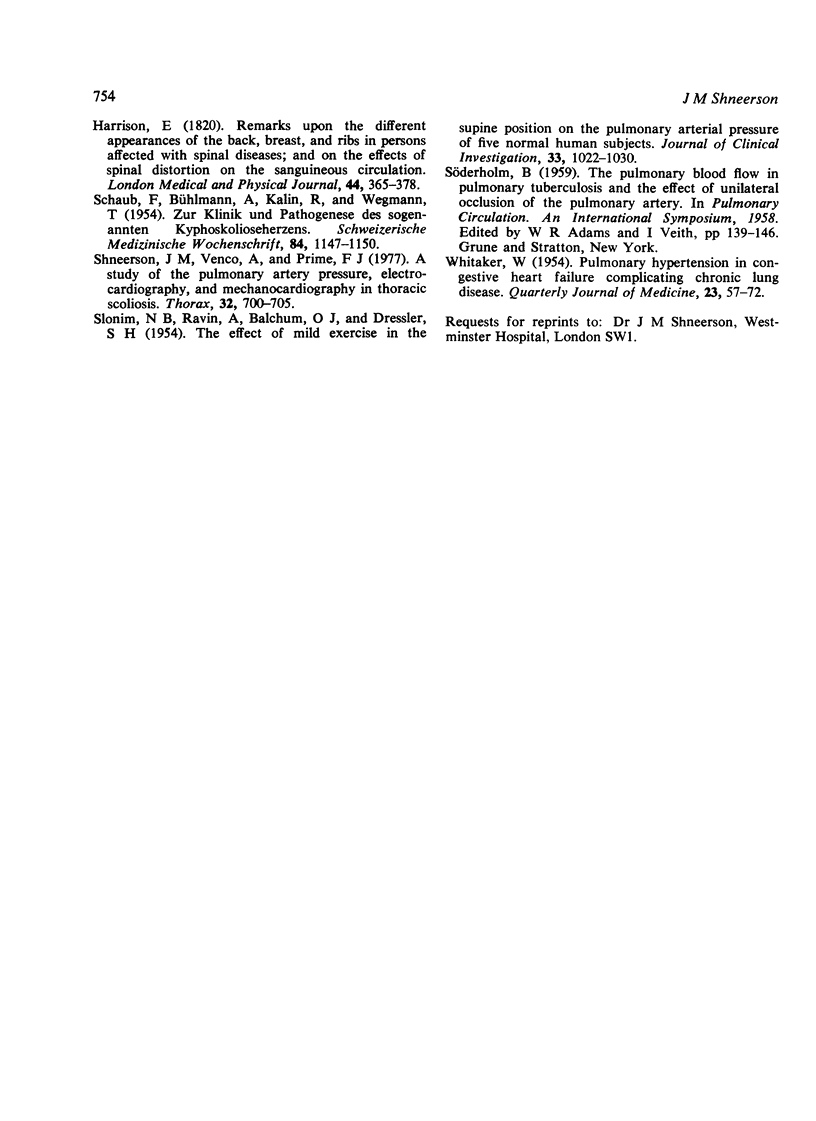
Selected References
These references are in PubMed. This may not be the complete list of references from this article.
- BERGOFSKY E. H., TURINO G. M., FISHMAN A. P. Cardiorespiratory failure in kyphoscoliosis. Medicine (Baltimore) 1959 Sep;38:263–317. doi: 10.1097/00005792-195909000-00004. [DOI] [PubMed] [Google Scholar]
- BEVEGARD S., HOLMGREN A., JONSSON B. Circulatory studies in well trained athletes at rest and during heavy exercise. With special reference to stroke volume and the influence of body position. Acta Physiol Scand. 1963 Jan-Feb;57:26–50. doi: 10.1111/j.1748-1716.1963.tb02572.x. [DOI] [PubMed] [Google Scholar]
- BEVEGARD S., HOLMGREN A., JONSSON B. The effect of body position on the circulation at rest and during exercise, with special reference to the influence on the stroke volume. Acta Physiol Scand. 1960 Jul 15;49:279–298. doi: 10.1111/j.1748-1716.1960.tb01953.x. [DOI] [PubMed] [Google Scholar]
- BRADLEY R. D. DIAGNOSTIC RIGHT-HEART CATHETERISATION WITH MINIATURE CATHETERS IN SEVERELY ILL PATIENTS. Lancet. 1964 Oct 31;2(7366):941–942. doi: 10.1016/s0140-6736(64)90869-4. [DOI] [PubMed] [Google Scholar]
- Bevegård S., Freyschuss U., Strandell T. Circulatory adaptation to arm and leg exercise in supine and sitting position. J Appl Physiol. 1966 Jan;21(1):37–46. doi: 10.1152/jappl.1966.21.1.37. [DOI] [PubMed] [Google Scholar]
- COURNAND A., RILEY R. L. Pulmonary circulation and alveolar ventilation perfusion relationships after pneumonectomy. J Thorac Surg. 1950 Jan;19(1):80–116. [PubMed] [Google Scholar]
- DUBOIS A. B., BOTELHO S. Y., BEDELL G. N., MARSHALL R., COMROE J. H., Jr A rapid plethysmographic method for measuring thoracic gas volume: a comparison with a nitrogen washout method for measuring functional residual capacity in normal subjects. J Clin Invest. 1956 Mar;35(3):322–326. doi: 10.1172/JCI103281. [DOI] [PMC free article] [PubMed] [Google Scholar]
- DUNNILL M. S. QUANTITATIVE OBSERVATIONS ON THE ANATOMY OF CHRONIC NON-SPECIFIC LUNG DISEASE. Med Thorac. 1965;22:261–274. [PubMed] [Google Scholar]
- Emirgil C., Sobol B. J., Campodonico S., Herbert W. H., Mechkati R. Pulmonary circulation in the aged. J Appl Physiol. 1967 Nov;23(5):631–640. doi: 10.1152/jappl.1967.23.5.631. [DOI] [PubMed] [Google Scholar]
- SCHAUB F., BUHLMANN A., KALIN R., WEGMANN T. Zur Klinik und Pathogenese des sogenannten Kyphoskolioseherzens. Schweiz Med Wochenschr. 1954 Oct 2;84(40):1147–1150. [PubMed] [Google Scholar]


